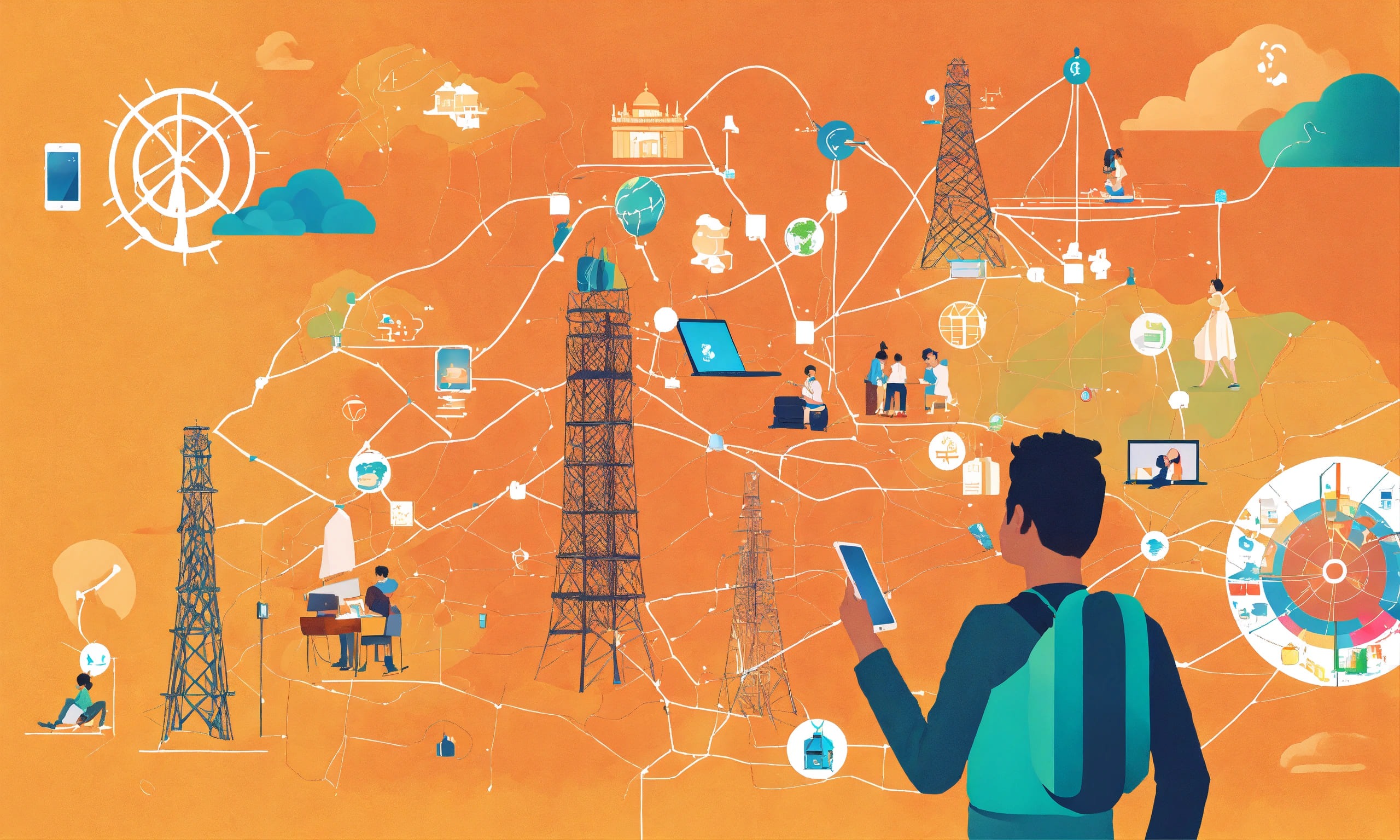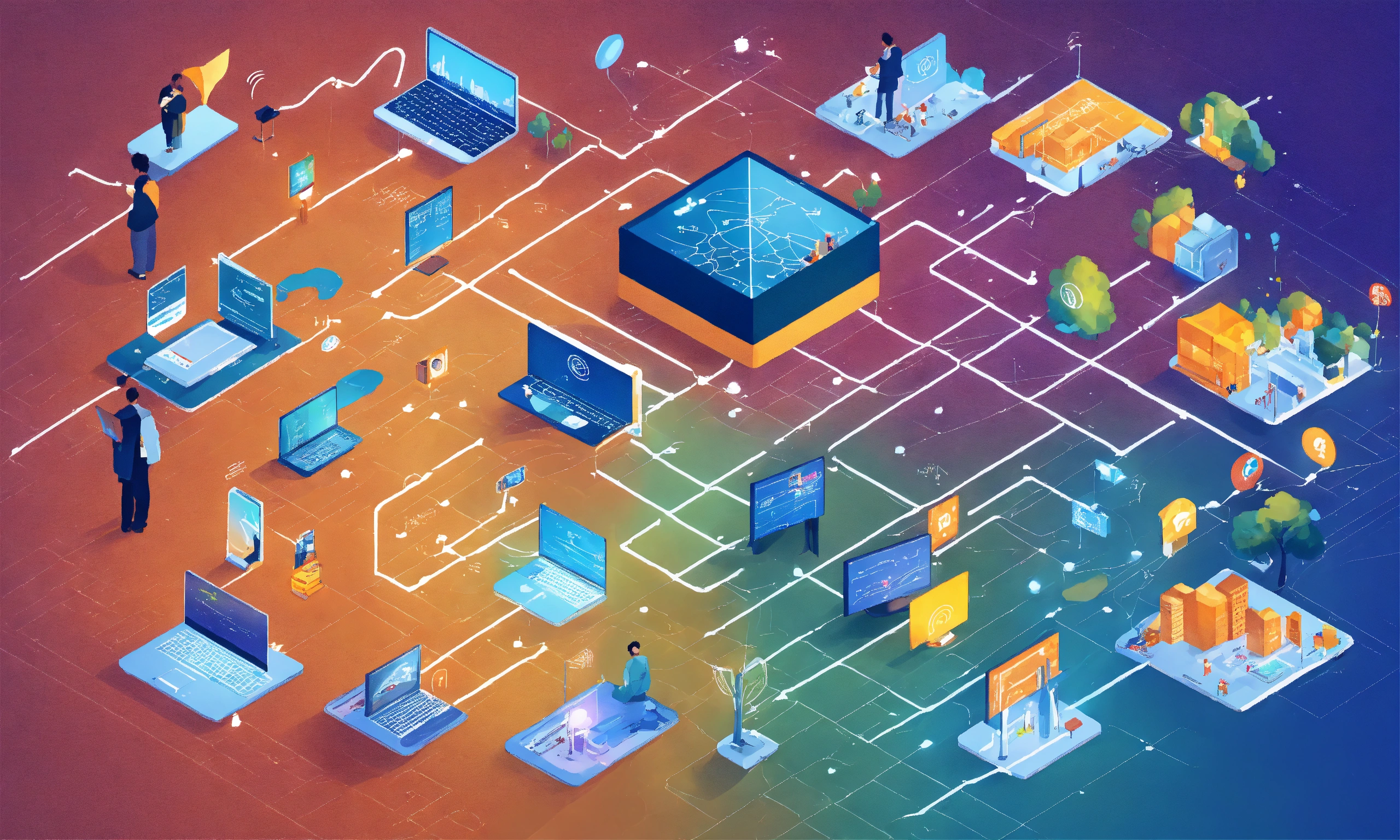Over time, the integration of M2M communication in smart grid technology has revolutionized the way you manage energy resources. This innovative system connects machines to machines, enabling real-time data exchange and automated control, which enhances efficiency and reliability in your energy consumption. Understanding this technology is vital for optimizing your energy usage, improving grid stability, and reducing costs. However, you should also be aware of potential cybersecurity threats that come with increased connectivity. Embracing M2M communication is crucial for a sustainable energy future and ensuring a resilient smart grid.
Fundamentals of M2M Communication
While exploring M2M communication within smart grid technology, it’s vital to understand its basic concepts and functionalities. This foundation paves the way for comprehending how various devices interact to enhance energy management and efficiency.
Definition and Principles
An M2M communication is the process through which machines communicate with one another without direct human intervention. This interaction primarily utilizes wireless networks or the internet, relying on a set of protocols and standards to ensure seamless data exchange. By integrating such systems, you promote real-time monitoring and control of devices across various applications, including smart grids.
Types of M2M Communication
Communication in M2M environments primarily encompasses several types, each tailored for specific operational needs. Here are the key types:
- Cellular Communication: Utilizes mobile networks to facilitate long-range communication.
- Wi-Fi Communication: Enables devices to connect to the internet over short distances.
- Bluetooth Communication: A short-range communication technology ideal for low-energy devices.
- LPWAN (Low Power Wide Area Network): Designed for low-bandwidth requirements over extended ranges.
- Satellite Communication: Provides connectivity in remote areas where other networks are unavailable.
Assume that you are evaluating various communication methods for M2M applications; understanding these types is crucial for making informed decisions.
| Type | Strengths |
|---|---|
| Cellular Communication | Wide coverage and high data rates. |
| Wi-Fi Communication | High speed over short distances. |
| Bluetooth Communication | Low power consumption and ease of setup. |
| LPWAN | Long-range capabilities with minimal power use. |
| Satellite Communication | Global reach for remote locations. |
Plus, you should recognize that each type of M2M communication can significantly impact operational efficiency in a smart grid. For instance, data collection and reporting can vary in latency and bandwidth requirements depending on the method used. Knowing the various types allows you to select the most optimal option for your specific application needs.
- Cellular Communication: Ideal for mobile use, but can have higher costs.
- Wi-Fi Communication: Offers high-speed connections, yet limited by its range.
- Bluetooth Communication: Excellent for short distances, but not suited for long-range scenarios.
- LPWAN: Efficient for small data transmissions, though may lack speed for larger datasets.
- Satellite Communication: Ensures connectivity anywhere, but often at a higher expense.
Assume that you prioritize efficient data handling; weighing these options based on your requirements is vital to maximize the potential of your M2M communication systems.
| Type | Potential Drawbacks |
|---|---|
| Cellular Communication | Costs can escalate with extensive data plans. |
| Wi-Fi Communication | Interference may occur with multiple devices. |
| Bluetooth Communication | Range is limited to around 30 feet. |
| LPWAN | Data speeds are generally slower compared to other methods. |
| Satellite Communication | Signal latency may affect real-time applications. |
Ultimately, comprehending the fundamentals of M2M communication will empower you to harness the full capabilities of smart grid technology and drive innovation in your energy management initiatives.
Smart Grid Technology Overview
Assuming you are interested in the evolving landscape of energy distribution, it’s vital to grasp the fundamentals of smart grid technology. This innovative framework allows for a more integrated, efficient, and reliable electrical system that connects various forms of energy generation, distribution, and consumption.
What is Smart Grid?
One key aspect of smart grid technology is its ability to integrate digital communication and advanced technologies into the existing electricity network, allowing for real-time monitoring and control of power flow. This transformation from traditional grids to smart grids enables improved energy efficiency, enhanced reliability, and better management of resources.
Benefits and Challenges
The benefits of implementing smart grid technology are significant, yet the challenges are equally noteworthy. Stronger energy efficiency, reduced operational costs, and improved resilience against disruptions define the advantages, while concerns related to cybersecurity and potential privacy issues represent vital challenges you should consider.
With the rapid adoption of smart grids, you should be aware that while the benefits include enhanced energy management and environmental sustainability, challenges such as cybersecurity threats and the complexity of integration pose risks. As you navigate these technologies, recognizing the balance between leveraging advantages and addressing vulnerabilities is crucial for ensuring a successful transition to a smarter energy infrastructure.
Role of M2M Communication in Smart Grid
Any discussion on smart grid technology must highlight the critical role of M2M communication. This advanced communication framework facilitates seamless interaction between various components of the grid, ultimately enhancing its operation and efficiency.
Enabling Real-time Data Exchange
The real-time exchange of data is one of the defining features of M2M communication in the smart grid. This capability allows for instantaneous monitoring of energy consumption, grid status, and predictive maintenance, ensuring that you are always updated on your energy usage and grid performance.
Improving Grid Efficiency and Reliability
Grid efficiency and reliability are paramount for any energy system, and M2M communication plays a vital role here. It helps to identify and isolate faults quickly, minimizing downtime and ensuring consistent energy delivery to your home or business.
Communication between devices enables quick identification of issues that could lead to outages or inefficiencies. By employing real-time monitoring and advanced data analytics, you can preemptively address potential failures, thereby enhancing the overall reliability of the grid. Additionally, the data collected contributes to the optimization of energy distribution, allowing for reduced operational costs and improved service levels. Ultimately, embracing M2M communication ensures a smarter, more responsive and efficient grid for you.
M2M Communication Technologies in Smart Grid
Your understanding of M2M communication technologies is crucial for grasping the versatility of smart grid systems. These technologies facilitate real-time data exchange between devices, enhancing the grid’s efficiency, reliability, and sustainability.
Wireless Communication (Wi-Fi, Cellular, etc.)
Cellular technologies serve as a backbone for wireless communication in smart grids, allowing devices like smart meters to transmit data over extensive networks. With the integration of Wi-Fi, these systems can offer increased flexibility and accessibility, enabling remote monitoring and management of energy resources.
Wired Communication (Ethernet, Fiber Optics, etc.)
Fiber optics provide unparalleled data transmission speeds and bandwidth, making them ideal for the high-demand environment of smart grids. When combined with Ethernet, you benefit from robust and secure connections that can handle a multitude of devices without compromising performance. This wired approach is necessary for establishing a fast and reliable network, crucial for the continuous flow of energy data and supporting operations during peak load times.
Communication via wired networks, such as Ethernet and fiber optics, provides not only remarkable speed but also enhanced security features necessary for protecting sensitive energy data. Their physical connections minimize interference and are less vulnerable to external disruptions compared to wireless alternatives. This stability allows for more consistent monitoring and can significantly reduce the potential for network failures. By leveraging these technologies, you can ensure that your smart grid infrastructure is both efficient and resilient.
Applications of M2M Communication in Smart Grid
Unlike traditional energy networks, the integration of M2M (Machine-to-Machine) communication in smart grid technology has revolutionized how utilities manage and deliver electricity. This advanced interaction enables various applications that significantly enhance operational efficiency, reliability, and customer service. Below are three pivotal applications that demonstrate the potential of M2M communication in the smart grid.
Advanced Metering Infrastructure (AMI)
Communication in AMI allows for the real-time exchange of data between smart meters and utility providers, enhancing energy consumption monitoring and management. This advanced metering system offers you a deeper understanding of your energy usage patterns.
- Real-time energy consumption data
- Remote meter reading capabilities
- Dynamic pricing and demand response
- Enhanced billing accuracy
- Improved outage detection and management
| Features | Benefits |
|---|---|
| Real-time Monitoring | Instantaneous insights into usage |
| Remote Management | Reduced operational costs |
| Consumer Engagement | Empowers users to manage energy consumption |
Distribution Automation
An vital aspect of smart grids, distribution automation enables utilities to remotely monitor and manage electrical distribution systems. This technological advancement enhances your service reliability and performance through automated processes.
To maximize efficiency, distribution automation employs M2M communication to control network devices, detect and isolate faults, and optimize energy flow. By integrating smart devices, such as switches and sensors, utilities can instantly react to issues, leading to reduced outage durations and improved overall service reliability. This capability allows you, as a consumer, to enjoy a continuous and robust power supply.
Grid Management Systems
The role of M2M communication in grid management systems is to facilitate the seamless exchange of data across various components of the grid. This ensures efficient operation and instills confidence in the reliability of your energy supply.
With improved data analytics and real-time monitoring capabilities, grid management systems can predict energy demand and supply fluctuations, ultimately optimizing your energy management strategies. This proactive approach reduces the risk of outages and enhances grid resilience, enabling utilities to provide a sustainable energy supply that meets your needs effectively.
Challenges and Limitations of M2M Communication in Smart Grid
To implement M2M (Machine to Machine) communication effectively in smart grid technology, several challenges and limitations must be navigated. Addressing these issues is imperative for optimizing the performance and security of smart grids.
Security Concerns
Smart grid systems are increasingly vulnerable to cyberattacks due to the proliferation of interconnected devices. Ensuring that your data remains secure and that unauthorized access is prevented is crucial, as breaches can lead to serious consequences such as service disruptions and data theft.
Interoperability Issues
Any smart grid relies on numerous devices and networks interacting seamlessly. However, achieving this interoperability can be complex, as diverse platforms may not communicate effectively, leading to potential inefficiencies and complications in your system.
Another factor contributing to interoperability issues is the variety of standards and protocols used by different manufacturers. Each device or system may require specific configurations, leading to a fragmented landscape where devices may not work together smoothly. This creates difficulties in ensuring that all elements of the smart grid operate collectively, potentially resulting in increased maintenance costs and reducing the overall efficiency of the system.
Scalability and Bandwidth Constraints
Interoperability and the increasing demand for data processing place significant pressure on the entire system. As the number of connected devices grows, your network may face challenges related to scalability and bandwidth limitations, affecting performance and reliability.
Bandwidth constraints can severely limit the amount of data transmitted within the smart grid, leading to delays and latency issues when relaying critical information. This can hinder your ability to make timely decisions, impacting overall efficiency and response times during critical situations. Moreover, as your smart grid scales, it’s imperative to ensure that your infrastructure can handle the increased data loads without compromising performance.
To wrap up
Summing up, M2M communication is pivotal in optimizing smart grid technology, enhancing energy management, and ensuring real-time data exchange between devices. By leveraging this interconnected framework, you can improve efficiency, reduce operational costs, and contribute to a more sustainable energy future. As you engage with these technologies, understanding their capabilities will empower you to make informed decisions that positively impact your energy management practices.
FAQ
Q: What is M2M communication in the context of smart grid technology?
A: M2M (Machine-to-Machine) communication refers to the direct exchange of data between devices without human intervention, enabling them to communicate and interact seamlessly. In smart grid technology, M2M communication plays a crucial role in automating the management of electricity networks. It allows smart meters, sensors, and other connected devices to share real-time information regarding energy consumption, grid status, and fault detection. This real-time data exchange enhances grid reliability, optimizes energy distribution, and facilitates demand response strategies, ultimately leading to a more efficient and sustainable energy system.
Q: How does M2M communication improve the efficiency of energy distribution in smart grids?
A: M2M communication enhances the efficiency of energy distribution by enabling instantaneous data collection and analysis from various points within the grid. Sensors strategically placed throughout the grid monitor electricity flow, voltage levels, and overall grid health. This data is then relayed to central management systems, which can quickly identify inefficiencies, potential outages, or areas of excessive demand. With this information, utilities can make informed decisions in real-time, such as rerouting energy to underserved areas or adjusting generation resources to meet demand. This proactive approach minimizes energy waste, reduces operational costs, and improves overall grid performance.
Q: What are some security concerns associated with M2M communication in smart grids, and how can they be addressed?
A: Security is a significant concern for M2M communication in smart grids, as the connection of numerous devices creates potential vulnerabilities that could be exploited by cyberattacks. Possible threats include unauthorized access to smart meters, data tampering, and denial-of-service attacks. To mitigate these risks, several measures can be implemented, such as strong encryption protocols to protect data in transit, robust authentication mechanisms to ensure that only authorized devices communicate, and regular software updates to patch vulnerabilities. Additionally, establishing a comprehensive security framework that includes monitoring systems for unusual activity and conducting regular risk assessments can significantly enhance the overall security posture of M2M communications within smart grid technology.





